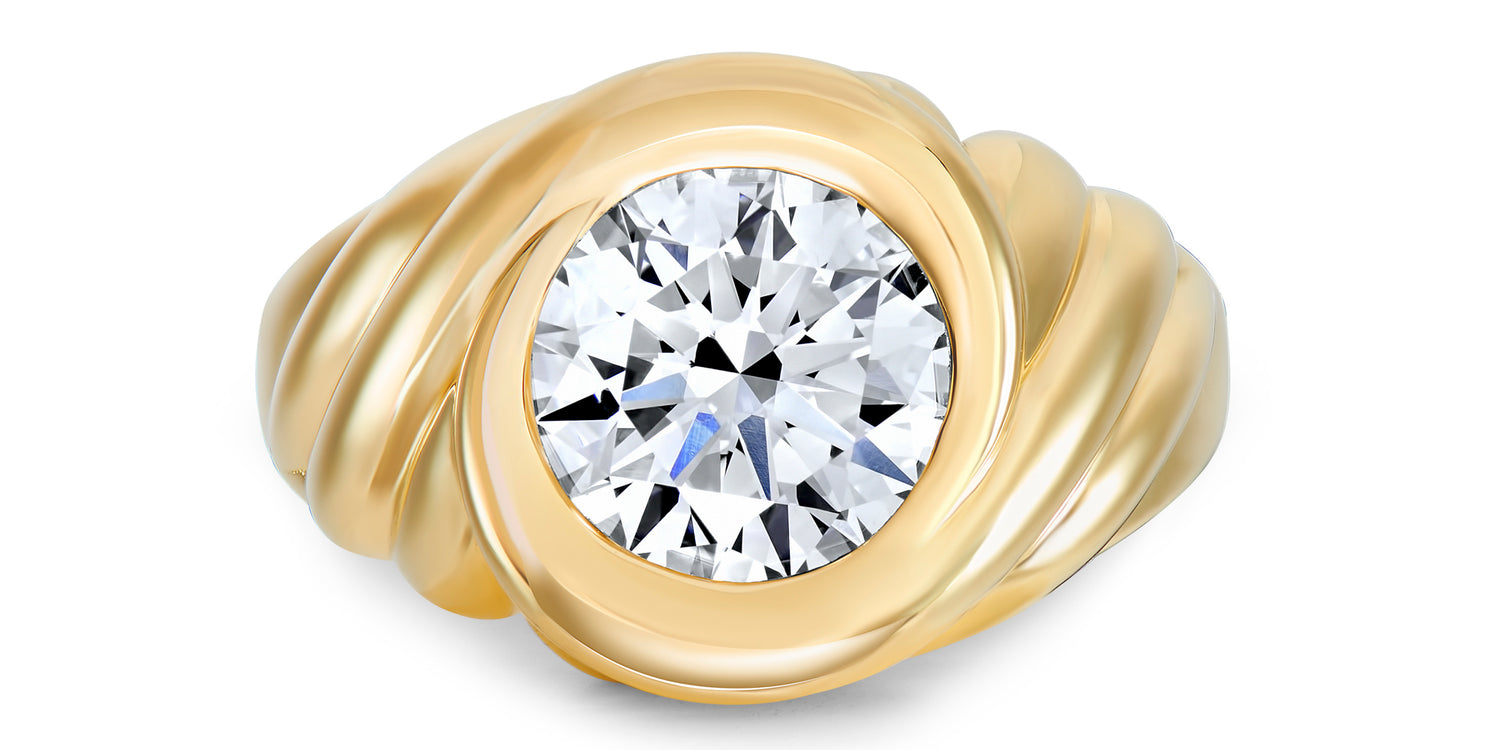Are lab grown diamonds really better than natural diamonds? What is the real difference between lab grown diamonds and mined diamonds? Why are the costs so different?
I am regularly asked these questions by curious customers, suspicious of their findings after a Google search. The truth is down to two things: perception of value, as in what actually matters to you as a buyer or wearer of the diamond, and the cost.

A bespoke design by V by Laura Vann featuring a lab-grown brilliant cut diamond.
Lab grown diamonds are visually, physically and chemically identical to natural, mined diamonds. The are both composed of pure carbon in a cubic crystalline form, so the difference lies in how they are made, and the corresponding cost - and (and here's the important bit) their value.
Lab grown diamonds are man-made, and grown in controlled conditions inside. They develop and grow in size throughout the process, a relatively quick few months rather than millions of years like their natural counterparts, and so they also form with natural flaws and inclusions like natural diamonds do. However, if the lab-grown diamond is showing signs of being exceptionally flawed or poor colour in the early stages of growth then the process is usually stopped - so it's quite hard to find really bad quality lab grown diamonds in larger sizes over a carat.
The fact that they can be made this way is considered by some to be 'ethical' - I use this word carefully, as ethics can cover environmental concerns as well as social - the working conditions of people employed by the manufacturer, for example.
Lab-grown diamonds are not mined, so there is no physical damage to land in order to produce them, however they do use a lot of energy to create, which does have some environmental impact of course.
The problem with mining natural diamonds is that the supply chain is almost impossibly long - with mining done in one country, usually very far away from its intended market, cutting is done in another, sorting in another, and selling in yet another - so it can be very hard to make sure all those stages are safe for all involved. It's almost impossible to guarantee a 100% 'ethically' sourced new natural diamond.

Natural pear-cut white diamond ring by Minka Jewels
Lab-grown diamonds therefore make great alternatives, but here's the downside - unlike natural diamonds they are not a finite resource, which means there is no limit to the number of lab grown diamonds that can be created and introduced to the market. There are essentially unlimited lab-grown diamonds available to buy, which means the price of them is unstable, and could technically get extremely low over the next ten or twenty years.
But what does this mean to the buyer? This is good news isn't it, cheap diamonds? Compared to buying a natural mined diamond, there is no guarantee that a lab-grown diamond will hold it's value at all. You could spend $10,000 on a huge lab-grown diamond for it to be worth half that in a year's time. This only really becomes a problem if you plan to sell your diamond engagement ring, but it does have implications on how people feel about lab-grown diamonds too.
So where does the true value of a natural diamond lie, if it looks identical to a lab-grown diamond? It no longer becomes about beauty, as lab growns are equally as beautiful and it's impossible to tell the difference. The answer is difficult to articulate, as it becomes more about a feeling; a sense that the natural diamond is 'better' and more impressive because it was created by nature over millions of years. A somewhat crude comparison is that of natural beauty in humans vs cosmetic surgery - are a woman's natural assets more impressive than something that's been achieved by cosmetic surgery, even if you can't tell the difference?
I do agree with this idea, and it's not something to be dismissed. Natural diamonds are incredible feats of nature and that will always wow us as humans. But the reality is that this finite resource comes at a huge financial cost - and why shouldn't customers with smaller budgets enjoy the beauty of a big diamond?
Many clients I've worked with recently have chosen a large lab-grown diamond for this reason - they want a beautiful stone, they don't plan on selling it, and it is now achievable for them thanks to lab-grown diamonds. I fully appreciate this standpoint and encourage it, but I do always remind them that their lab-grown diamond will not hold its value like a natural diamond will - in fact larger size natural diamonds tend to increase in value as fewer of them are mined.
Buying a lab-grown diamond therefore should not be approached with the same mindset as a natural one - it's not an investment, and is to be worn and enjoyed in a beautiful piece of jewellery, but you can't sell it and expect to get what you paid for. However the joy from wearing an incredible design with a big stone could feasibly counteract that for many people, making lab-grown diamonds a democratic and exciting choice for anyone choosing their engagement ring in 2023 and beyond.
